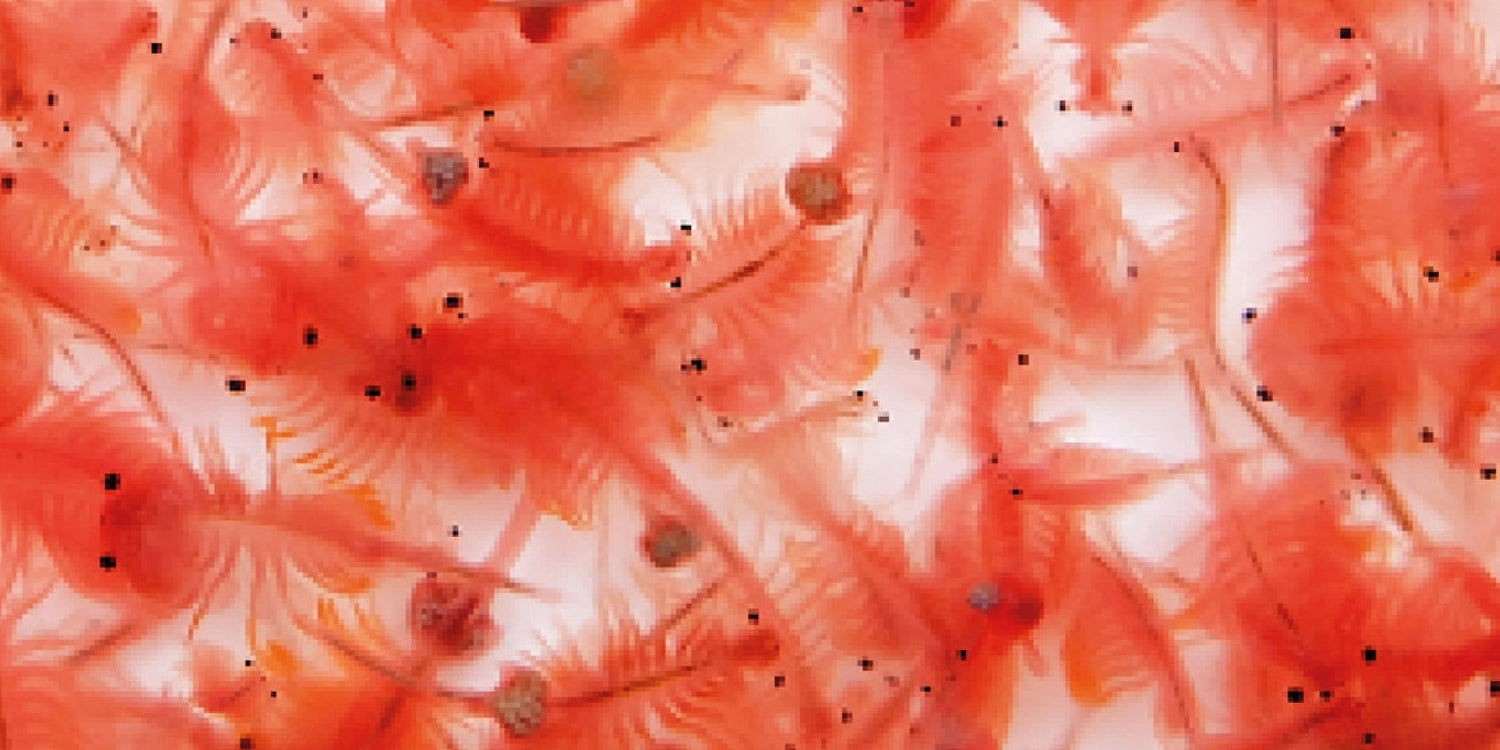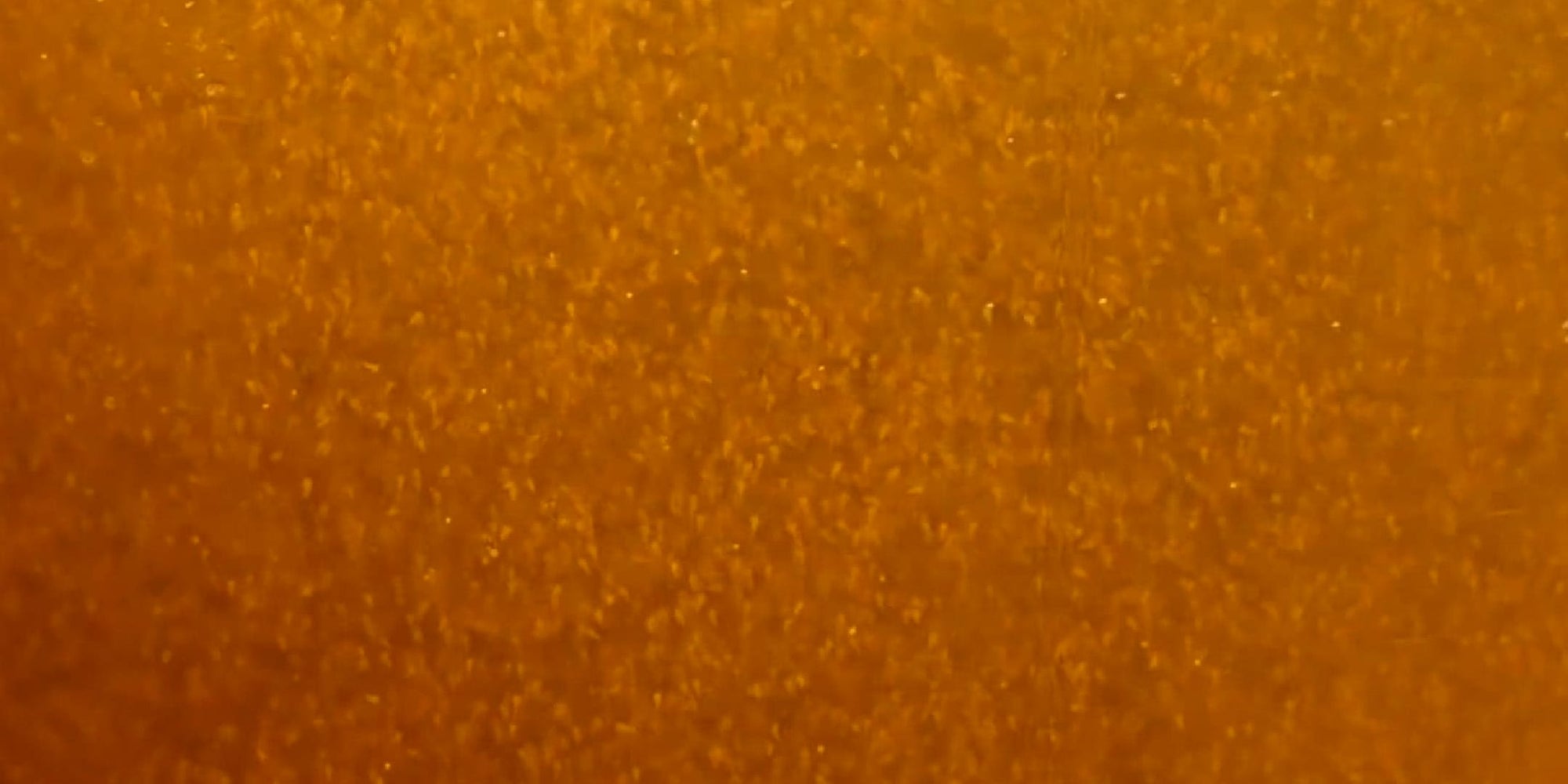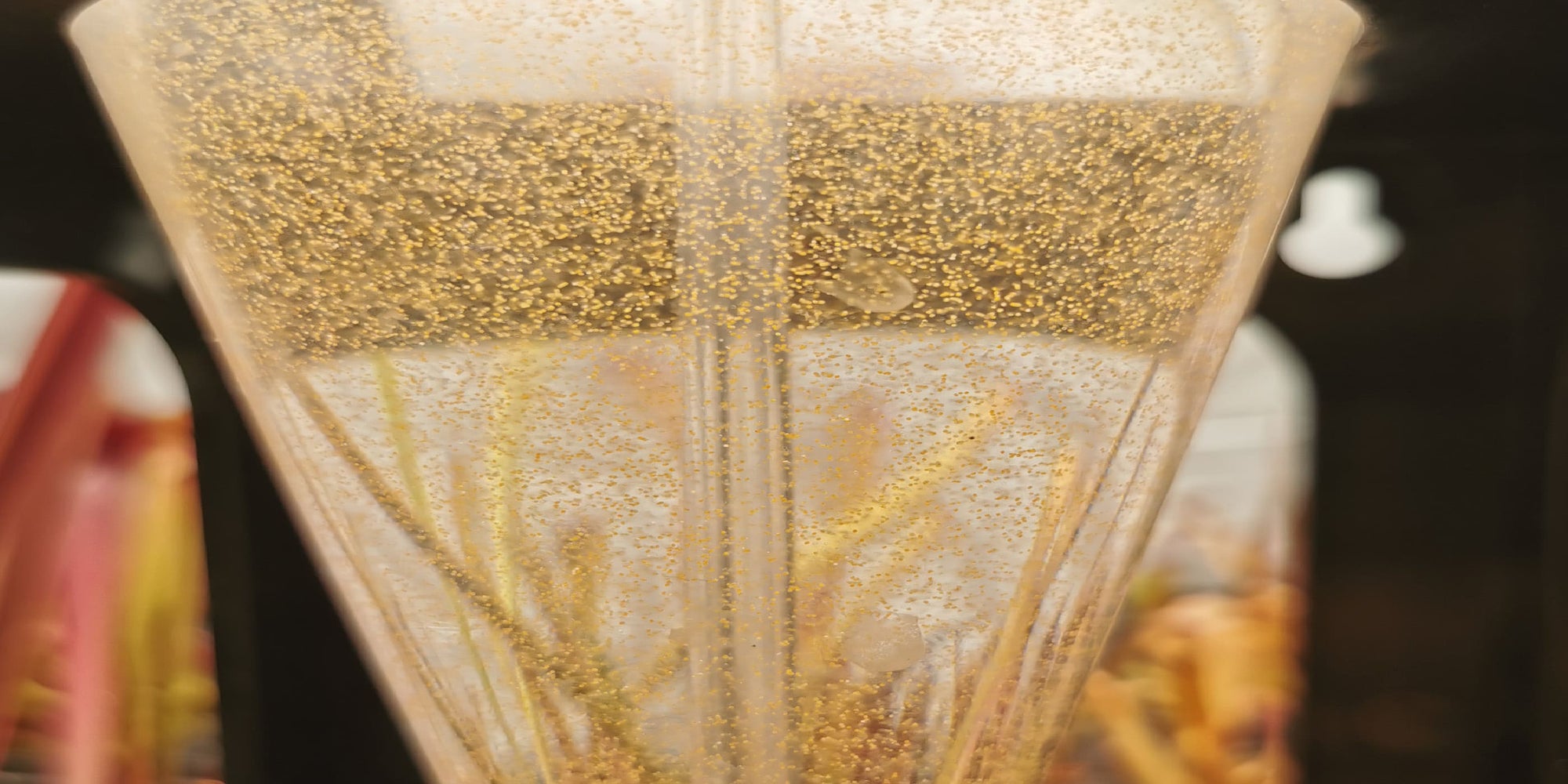Which Artemia size is the right one?
Artemia size? This is an important question that must be answered before feeding fish larvae. Because only with the right live food can an optimum survival rate be achieved during rearing. We can help you determine the size of the nauplii!
Which Artemia species should I choose?
Based on scientific studies conducted worldwide, we have compiled biometric data on the most important Artemia species. The following table shows the average length and the average dry weight of the nauplii directly after hatching as well as the average diameter of the cysts.
| Top type | Synonym | Origin | Length of nauplii [µm] | Dry weight [µg/Nauplie] | Diameter of the hydrated cysts [µm] |
|---|---|---|---|---|---|
| Artemia franciscana | AF430, Microcysten | San Francisco Bay, USA | 428 | 1,63 | 224,7 |
| Artemia franciscana | San Pablo Bay, USA | 433 | 1,92 | 235,6 | |
| Artemia franciscana | Macau, Brazil | 429 | 1,68 | 227,8 | |
| Artemia franciscana | Macau, Brazil | 447 | 1,74 | 228,7 | |
| Artemia franciscana | Baratac New, Philippinen | 429 | 1,68 | 228 | |
| Artemia franciscana | GSL | Great Salt Lake, USA | 486 | 2,42 | 244,2 |
| Artemia franciscana | Shark Bay, Australia | 458 | 2,47 | 259,7 | |
| Artemia franciscana | Bahia Salinas, Puerto Rico | 452 | 2,1 | 253,7 | |
| Artemia franciscana | Galerazamba, Colombien | 480 | 2,27 | 249,9 | |
| Artemia franciscana | Chaplin Lake, Canada | 475 | 2,04 | ||
| Artemia parthenogenetica | Aibi Lake, China | 515 | 4,55 | ||
| Artemia parthenogenetica | Margherita di Savoia, Italien | 517 | 3,33 | 284,9 | |
| Artemia persimilis | Buenos Aires, Argentina | 431 | 1,72 | 238,2 | |
| Artemia salina | Sabkhet Sijoumi, Tunisia | 437 | – | 260,9 | |
| Artemia sinica | Yuncheng, China | 460 | 2,03 | ||
| Tibetan Artemia | Lagkor Co Lake, Tibet | 667 | – | 330 | |
| Artemia urmiana | Lake Urmiah, Iran | 497 | – |
Data based on Vanhaecke & Sorgeloos 1980, Vanhaecke et al. 1987, Abatzopoulos et al. 1998, Dhont & Van Stappen 2003, Naceur et al. 2008, Munoz & Pacios 2010.
Nauplii size varies depending on the species.
Depending on the species, the size of the nauplii can vary significantly. Within a species, the size of the Artemia nauplii can already vary depending on which salt lake the lineage originated from (Vanhaecke & Sorgeloos 1980). The most commercially utilised species is Artemia franciscana, which originally came from North America but is now found all over the world due to human introduction (Munoz & Pacios 2010).
A subspecies of Artemia franciscana produces the smallest known Artemia nauplii with an average length of 428µm (Vanhaecke & Sorgeloos 1980). The eggs are also known under the synonym AF430 and originally come from San Francisco Bay in California. These microcysts are used particularly in aquaculture but also in marine aquariums. Due to their small size, AF430 nauplii are particularly suitable for small fish larvae, such as clownfish or yellowtail kingfish.
Artemia franciscana from the large salt lakes in Utah, known under the synonym GSL (Lavens & Soorgeloos 1996), are used even more commercially. These are somewhat larger with an average size of 486µm (Vanhaecke & Sorgeloos 1980).
The largest Artemia nauplii with a length of 667µm are produced by the species Artemia tibetiana (Abatzopoulos et al. 1998). This species prefers cold water and is difficult to access commercially.
High-quality products matching this article are presented on www.algova.com available.
Sources
Abatzopoulos, T., J., Zhang, B., Sorgeloos, P., 1998. Artemia tibetiana: preliminary characterization of a new Artemia species found in Tibet. International Study on Artemia. LIX. International Journal of Salt Lake Research 7: 41-44.
Dhont, J., Van Stappen, G., 2003. Biology, Tank Production and Nutritional Value of Artemia. In: Stottrup J.G., McEvoy L.A. (Ed.). Live feeds in marine aquaculture. Blackwell Publishing Ltd, Oxford: 76-77.
Lavens, P. & Sorgeloos, P., 1996. Manual on the Production and Use of Live Food for Aquaculture. FAO Technical Paper No.361: 79-80
Munoz, J., Pacios, F., 2010. Global Biodiversity and geographical Distribution of diapausing aquatic Invertebrates: The Case of the cosmopolitan Brine Shrimp: Artemia (Branchiopoda, Anostraca). Crustaceana 83 (4): 465-480.
Naceur, H., B., Jenhani, A., B., R., El Cafsi, M., Romdhane, M. S., 2008. Determination of biological characteristics of Artemia salina (Crustacea: Anostraca) population from Sabkhet Sijoumi (NE Tunisia). Transitional Waters Bulletin 3: 65-74.
Vanhaecke, P., Sorgeloos, P., 1980. International Study on Artemia IV. The biometrics of Artemia strains from different geographical origin. The Brine Shrimp Artemia Vol. 3: 456p.
Vanhaecke, P., Tackaert, W., Soorgeloos, P., 1987. The biogeography of Artemia: an updated review. Artemia Research and its Applications Vol.1: 380p.





